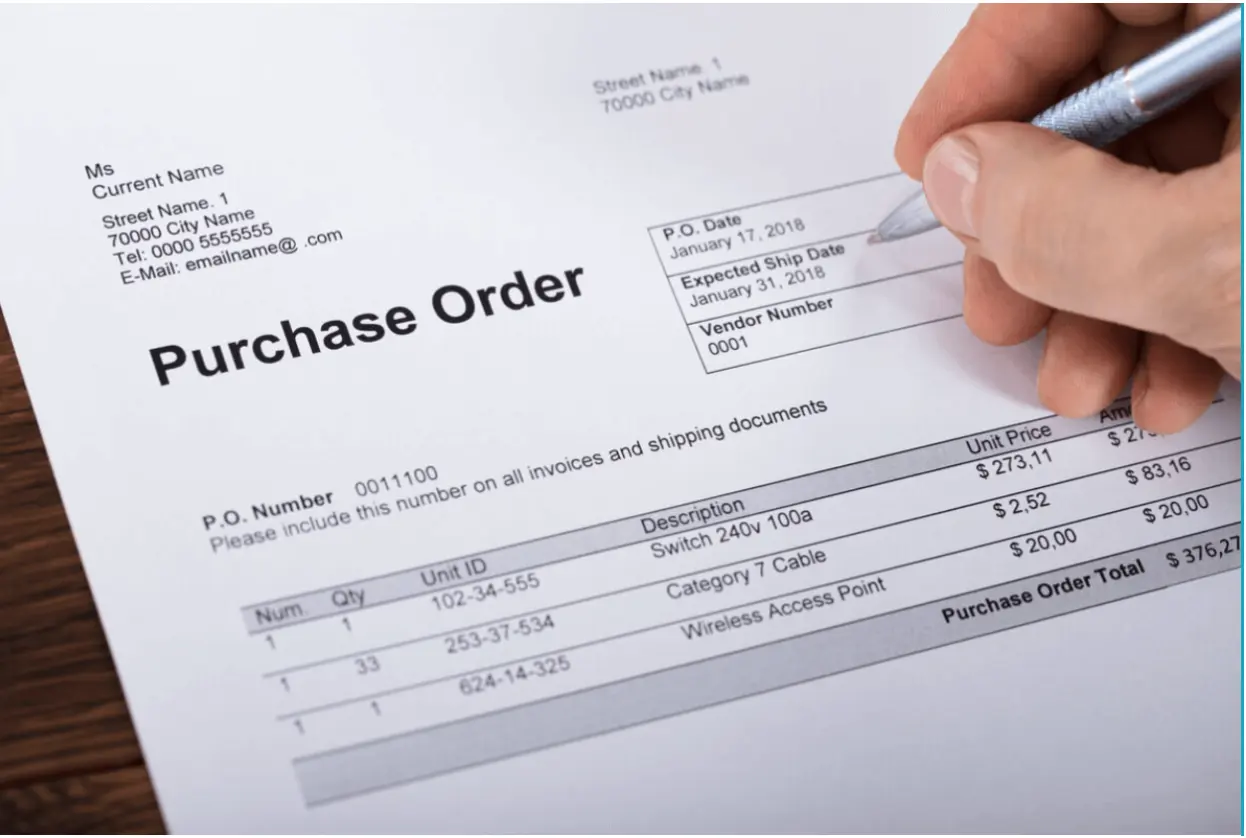A purchase order needs to be created whenever a merchant acquires products for their retail company to sell. Even though this type of document is easy to overlook with long-term suppliers, it still has a lot of advantages for retail firms because it allows retailers to keep inventory and expenses under control, using route optimization software.
*Updated 7/18/2024
That is why this article will give you a good understanding of purchase orders and how to handle them effectively in your e-commerce stores.
1. What is a Purchase Order?
A purchase order or PO is considered a legally binding document created by a buyer and then presented to the seller. Like a "cart" in an online store when you’re shopping online, a purchase order is a list of what you want to buy. However, it will provide in detail the quantity or types of products that the buyers need, payment information as well as delivery details.
2. Importance of Managing Purchase Orders Effectively
A purchase order is not only a legally binding document between you and your suppliers but also an essential document to keep track of your inventory and improve finance operations. Many retailers set up a benchmark for their stores to manage their supply chain with utmost priority.
While the excess stock will considerably reduce your working capital account, out-of-stock will stop your potential customers from buying your products. Moreover, PO will give you an overview of all suppliers you have been working with and help you select the best suppliers with the best price and product quality.
3. How to handle purchase orders
3.1. Specify clear PO guidelines and stages
Firstly, effective purchase order management starts with specifying the PO guidelines and stages.
These purchasing policies and processes must be clear and specific for your staff to understand. As your team will make purchases on the manager's behalf, the guidelines need to be consistent to prevent any mistakes or confusion in the future.
Important information you should include in the guide is the POs approval process, examples of purchasing scenarios, or supplier selection. These are the essential things to ensure your e-commerce stores will have smooth purchase order processing.
3.2. Frequently review the PO process
Reviewing the PO process frequently is crucial, especially when there are many employees from different functional areas taking part in the purchasing tasks.
You need to take feedback from each department, such as the warehouse or sales team. This action will help you point out the problems in the purchase order process and adjust them timely.
Merchants can get feedback from their customers' opinions when they work directly with them, who might give them the best ideas to improve their purchase order management.
Besides, you can conduct audits and quality control regularly. You should keep these records for later audits. If you keep these related to one purchase together, your warehouse managers can get all the valuable information and an overview of all items.
To make the managers' work easier, warehouse management software is a great contribution.
You can follow this checklist below to review your PO:
- Company name,
- Date of PO,
- Terms of sale,
- Bill-to, sold-to, and ship-to address,
- Itemized charges,
- Signature and name of the buyer.
3.3. Build supplier database
Every retailer should keep records of all suppliers they’ve purchased from in the past.
These records need to include at least their contact details and payment terms. If a supplier runs out of some products your business needs, you can instantly choose another supplier as an alternative.
An accessible database will save a lot of time for everyone in your business to choose a supplier because this is one of the most significant benefits of purchasing order software for your stores.
3.4. Automate purchase order processing
The purchase orders should always be sent to suppliers in a timely manner because they explain the agreement terms and safeguard your business. If you face a delay in delivering these documents, you need to inform your partner respectfully on time.
To limit the possibility of delay in sending POs to suppliers, merchants can automate the purchase order processing. You will save time and effort by automating your purchase orders with a POS or MSI system.
Thanks to automated PO processing, you will always know when to replenish products and how many items you need. These systems also provide powerful tools to support your purchasing tasks, such as:
- Automatically creating purchase orders when a certain threshold is reached,
- Implementing cross-warehouse internal deliveries,
- Creating a recurring order,
- Organizing and storing purchase-related documents,
- Keeping track of the order’s status and stages.
However, errors or mistakes can sometimes happen and waste retailers' money. Therefore, having a PO approval process will stop merchants from financial and inventory mismanagement.
Implementing the PO process will make sure that you don't go with duplicate orders or extra stock that your business doesn't need, which will help you manage your purchase orders effectively, prevent you from being unprofessional to suppliers, and ensure you always have sufficient inventory to fulfill customer orders.
If you want to learn more about customer preferences right from your website to serve them better, you can easily create a popup form and ask them.
Further reading: 3 Useful Tips for Using Pop-ups Without Hurting your SEO
3.5. Manage purchasing staff
Suppose you want to have a point of sale (POS) or multi-source inventory (MSI) system for your e-commerce stores in the future. In that case, assigning the correct permission for your staff members is critical because they will directly manage the purchase orders.
This is especially useful when your supplier wants to ask for their PO status or delivery information, and your staff can give them the answer correctly and promptly.
To Sum Up
We hope this article has helped you understand more about purchase orders and valuable tips to handle purchasing at your e-commerce store more effectively. Implementing the above tips will save you time in management, work with your suppliers effectively, and, more importantly, ensure the right stock at the right time to sell and increase sales.
The right purchasing order software will automate and simplify all the processes and turn procurement tasks into a breeze. You need to analyze your business needs and budget for the software and choose a trusted partner.








